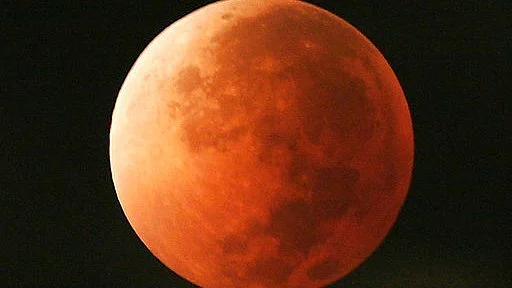India experiences a celestial treat on 31 January, with an event that the NASA calls “super blue blood moon” that graces the skies on Wednesday, 31 January.
Indians can look up at the sky between 6:21 pm and 7:37 pm on Wednesday, according to The Hindu, with the eclipse reportedly having started around 5:18 pm.
This supermoon marks the end of the trilogy, the first two appearing on 3 December 2017 and 2 January 2018 respectively.
For the uninitiated, a supermoon, reports Space.com, is when the moon appears larger and brighter in the sky, due to the full moon coinciding with moon's closest approach to Earth in its orbit.
During this occurrence, the moon appears about 14 percent larger and 30 percent brighter, reports NASA.
According to The Hindu, the last supermoon that was viewed in Asia was on 30 December 1982.
What's the Science Behind It?
The ‘super blue blood moon’ gets its name from the fact that a lunar eclipse is expected to occur on the morning of 31 January – a celestial event that will temporarily give the moon a reddish or copper-ish colour, reports IANS.
According to The Hindu, this happens when the sunlight passing through the Earth’s atmosphere breaks down its constituent colours, out of which the red part gets scattered by the atmosphere and falls on the Moon's surface, thus giving it its reddish or copper-ish hue.
This moon is also called a ‘super blue’ moon and this is simply due to the fact that the second full moon of a calendar month is traditionally referred to as a ‘blue moon’.
The ‘supermoon’ will appear larger and brighter in the sky, because during the eclipse, the Moon will be close to its perigee, The Hindu report adds.
When and How to Watch It?
According to Indian Express, the north eastern states caught a glimpse of the event first – between 4:21 pm and 5:18 pm on Wednesday.
The west coast of India and parts of Rajasthan could view it from 6:21 pm to 7:37 pm.
The rest of India saw it between 5:18 PM and 6:21 PM, the report adds.
The eclipse will reportedly last for a little over an hour.
Don’t have equipment to view the moon? Don’t fret, As Dr Debiprosad Duari, Director of MP Birla Planetarium, Kolkata confirmed to The Hindu, the supermoon can be viewed through the naked eye from any part of the country.
Astronomer Praveen Suryavanshi, however, told Express UK that the spectacle will be best viewed from a high vantage point or somewhere away from the pollution and the city lights.
(With inputs from IANS, The Hindu and Indian Express)
(At The Quint, we question everything. Play an active role in shaping our journalism by becoming a member today.)
